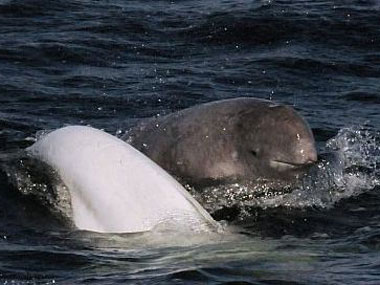Be Informed
Sign up for Sépaq emails to be the first to find out about our promotions, news and special offers.
Having extensive knowledge of the parks to better preserve them is the foundation that justifies the efforts invested in inventories, monitoring programs and scientific research. At Parc marin du Saguenay–Saint-Laurent, the territory is so full of special elements that it’s a living laboratory for scientists from many disciplines.
The future of the marine park is closely linked to these research activities. The information provided by researchers helps managers make more informed decisions about conservation and the management of human activities. The education and interpretation programs also draw on this data.
With this in mind, the marine park’s advisory committee on ecosystem management and research (known as the GER advisory committee) created a scientific research program for research partners. Made up of scientific experts from the academic world, from various provincial and federal government departments, and from non-profit conservation agencies, the GER advisory committee has designed a program that targets research and monitoring needs and priorities as a means of attracting the interest of researchers, of coordinating efforts, and of fostering complementarity regarding projects carried out in the park.
For more details, please consult the scientific research program of the Saguenay–St. Lawrence Marine Park.
To find out more about the various research projects taking place in the St. Lawrence River, visit www.baleinesendirect.org.
Find out more about scientific research in the Québec's National Parks network
Called the white whale, the white porpoise or the sea canary, the beluga has always fascinated people. In the past, belugas flourished in the waters of the St. Lawrence, numbering between 7,800 and 10,000 at the end of the 19th century. Unfortunately, intensive commercial whaling at the beginning of the 20th century nearly caused them to disappear. Although whaling has been banned since 1979, the beluga population has not recovered and is even believed to be in decline. Today, there are only 889 belugas left in the St. Lawrence.

The population of belugas in the St. Lawrence Estuary is now endangered.
The St. Lawrence beluga lives year-round in the St. Lawrence Estuary and the Gulf of St. Lawrence, and frequents the Saguenay Fjord in the summer. Its entire reproductive cycle takes place in these waters. Since 2010, problems related to the birth and survival of young belugas have been observed. Belugas give birth during the summer, in July and August in particular. This is a crucial time for the young, and for their mothers as well. Females need peace and quiet to raise newborns.
When belugas approach your boat, they react to your presence and change their behavior. You may be interrupting their rest, meals, and even birthing and breastfeeding. Repeated disruptions may have an impact on the survival of the young and on beluga health and reproduction. Maintain a distance of at least 400 meters. To learn about best practices to be adopted in the presence of belugas, please visit parcmarin.qc.ca.
Sign up for Sépaq emails to be the first to find out about our promotions, news and special offers.